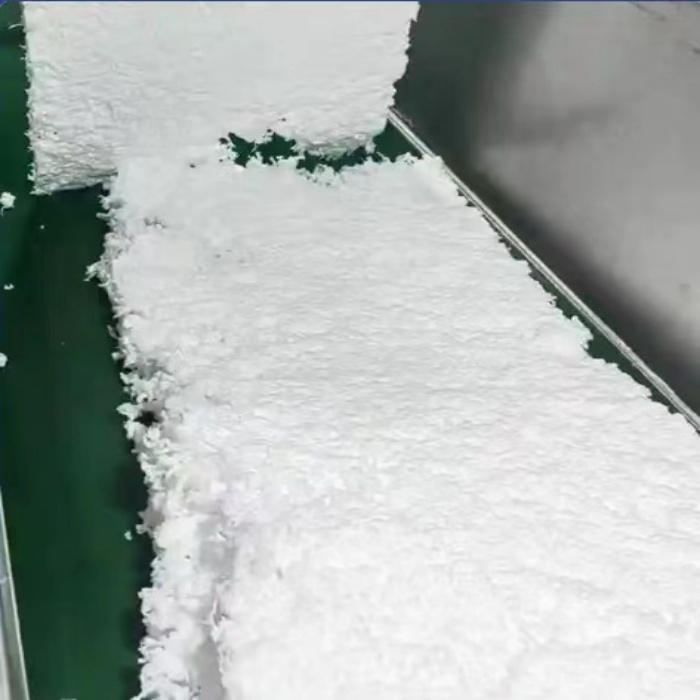In an era where air and liquid purity are critical for industries ranging from healthcare to manufacturing, high-performance filtration has become a cornerstone of modern technology. Among the various materials used in filtration systems, micro glass fiber stands out as a superior choice due to its exceptional efficiency, durability, and versatility.
As industries demand higher filtration standards to meet regulatory requirements and improve operational efficiency, micro glass fiber emerges as the material of the future. This article explores why micro glass fiber is revolutionizing filtration technology, its advantages over traditional materials, and its applications across key industries.
What is Micro Glass Fiber?
Micro glass fiber is a synthetic material composed of ultra-fine glass fibers, typically ranging from 0.5 to 10 micrometers in diameter. These fibers are engineered to create a dense, porous structure capable of capturing microscopic particles while maintaining high airflow or liquid permeability.
The manufacturing process involves melting glass and extruding it into fine fibers, which are then bonded together to form sheets, rolls, or custom-shaped filters. The resulting material offers a high surface area, allowing for superior particle retention without significant pressure drop—a critical factor in filtration efficiency.
Key Advantages of Micro Glass Fiber in Filtration
1. Exceptional Filtration Efficiency
Micro glass fiber filters can capture particles as small as 0.3 microns with over 99.97% efficiency, making them ideal for HEPA (High-Efficiency Particulate Air) and ULPA (Ultra-Low Penetration Air) filters. This level of performance is crucial in industries like pharmaceuticals, semiconductor manufacturing, and healthcare, where even the smallest contaminants can cause significant issues.
2. High Thermal and Chemical Resistance
Unlike organic filter media (such as cellulose or synthetic polymers), micro glass fiber can withstand extreme temperatures (up to 500°C or more) and resist degradation from harsh chemicals. This makes it suitable for:
- Industrial exhaust filtration (e.g., capturing hazardous fumes)
- High-temperature gas filtration (e.g., in power plants)
- Aggressive chemical filtration (e.g., in laboratories)
3. Low Airflow Resistance
The unique structure of micro glass fiber allows for high dust-holding capacity while maintaining low resistance to airflow. This means longer filter life and reduced energy consumption in HVAC systems, cleanrooms, and industrial ventilation.
4. Durability and Longevity
Glass fiber filters are resistant to moisture, microbial growth, and mechanical stress, ensuring longer service life compared to traditional filter media. This reduces replacement frequency and maintenance costs.
5. Customizability for Various Applications
Micro glass fiber can be engineered into different forms, including:
- Pleated filters (for HVAC systems)
- Depth filters (for liquid filtration)
- Nanofiber-coated filters (for enhanced efficiency)
This adaptability makes it a versatile solution across multiple industries. - HEPA filters in hospitals to prevent airborne infections
- Sterile filtration in drug manufacturing to ensure product purity
- Laboratory air purification to maintain contamination-free environments
- Cleanroom filtration to eliminate dust and static-sensitive particles
- Process gas filtration to protect sensitive equipment
- Engine air intake filters for improved combustion efficiency
- Cabin air filters to enhance passenger air quality
- Wastewater treatment for fine particle removal
- Flue gas filtration in power plants to reduce emissions
- Liquid filtration to remove microorganisms and sediments
- Air filtration in packaging facilities to ensure hygiene
Applications of Micro Glass Fiber Filtration
1. Healthcare and Pharmaceuticals
2. Semiconductor and Electronics Manufacturing
3. Automotive and Aerospace
4. Industrial and Environmental Protection
5. Food and Beverage Industry
Micro Glass Fiber vs. Traditional Filter Media
|
Property |
Micro Glass Fiber |
Cellulose Filters |
Synthetic Polymers |
|
Filtration Efficiency |
Extremely high (≥99.97% @ 0.3µm) | Moderate (varies with pore size) | High (but may clog faster) |
| Temperature Resistance | Up to 500°C+ | Limited (<100°C) | Moderate (up to 200°C) |
| Chemical Resistance | Excellent | Poor (degrades with solvents) | Good (varies by polymer) |
| Durability | Long-lasting | Short lifespan | Moderate lifespan |
| Cost Efficiency | Higher initial cost, lower lifecycle cost | Low initial cost, frequent replacements | Mid-range cost |
Future Trends and Innovations
1. Nanofiber-Enhanced Glass Filters
Combining micro glass fibers with electrospun nanofibers further improves filtration efficiency while maintaining low airflow resistance.
2. Sustainable and Recyclable Filters
Research is underway to develop eco-friendly glass fiber filters that can be recycled or reused, reducing environmental impact.
3. Smart Filtration Systems
Integration with IoT sensors allows real-time monitoring of filter performance, enabling predictive maintenance.
Conclusion
Micro glass fiber represents the future of high-performance filtration due to its unmatched efficiency, durability, and adaptability. As industries continue to demand cleaner air and purer liquids, this advanced material will play an increasingly vital role in ensuring safety, compliance, and operational efficiency.
From healthcare to heavy industry, micro glass fiber filters are setting new standards—making them an indispensable component in next-generation filtration technology.
Investing in micro glass fiber filtration today means better performance, lower long-term costs, and a cleaner future.
Post time: Jun-26-2025

